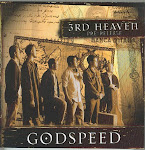- Inspirational stories from first time authors about how they landed that first book!
- Quick tips for Writers & Illustrators: This covers topics that are especially helpful to the new writer and illustrator.
- Before Your First Sale: You'll learn about cover letters, queries, proposals, manuscript formats, resumes, submissions, agents & art reps.
- Running Your Business: This section covers contracts & negotiations, payment methods, copyright, great sources for contract help, and more.
- Evolving Children's Book Publishing by Kelly Milner Halls: This article is a must read if you want to stay up to date in today's changing market! Follow her five steps.
This awesome book by Alice Pope does far more than give information on publishing houses---it also inspires, teaches, and helps keep writers up to date in this rapidly changing industry. In my opinion it's a valuable tool for the children's writer. I've already got my 2010 edition and it's right next to my computer. Got yours?






















